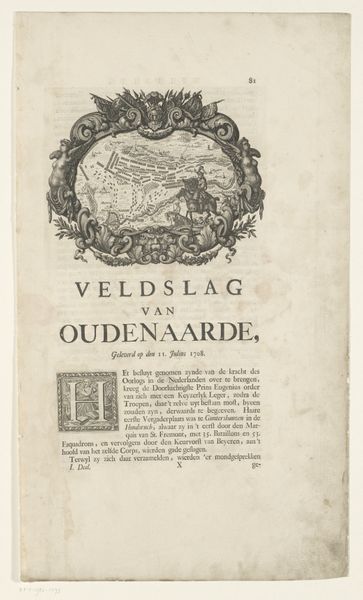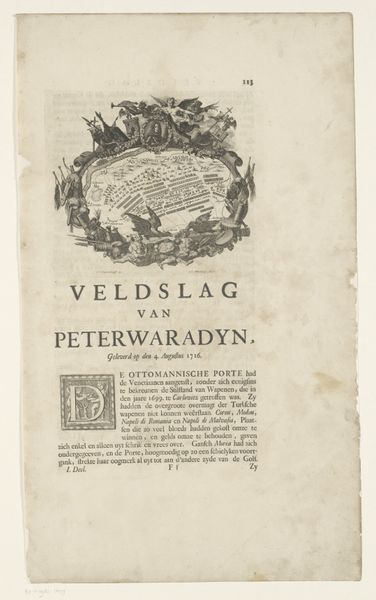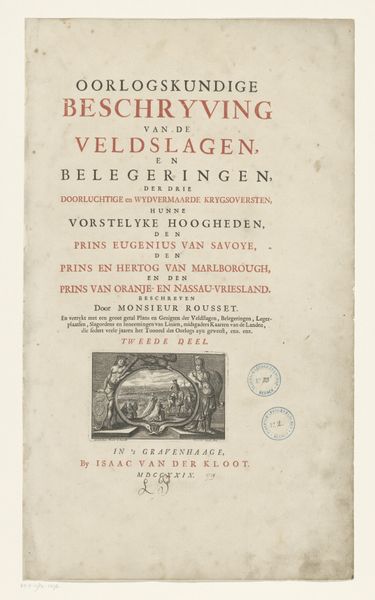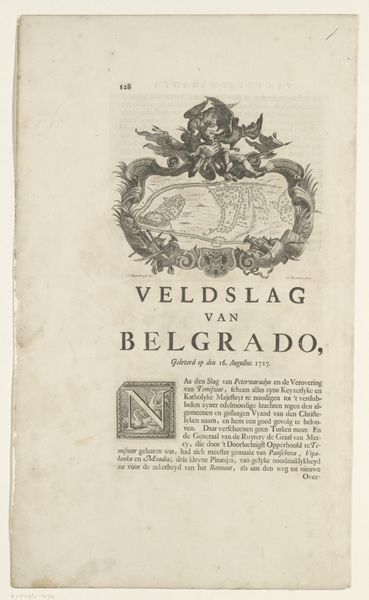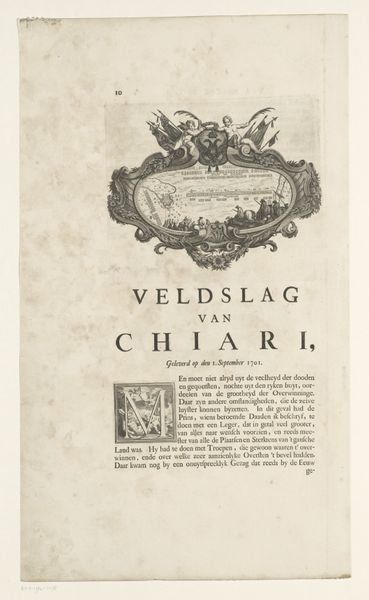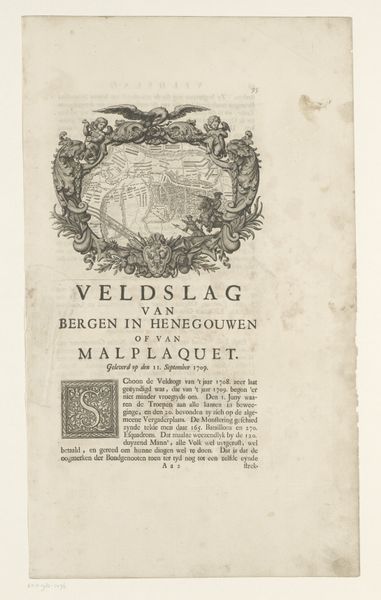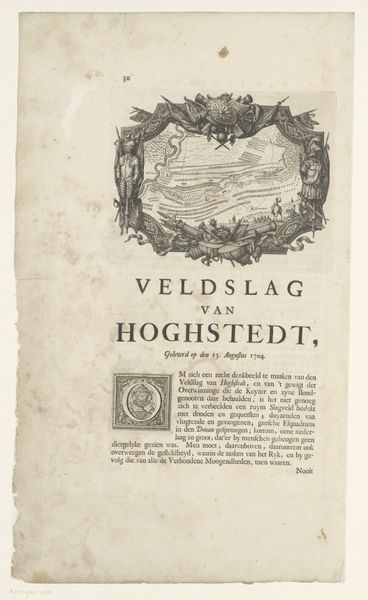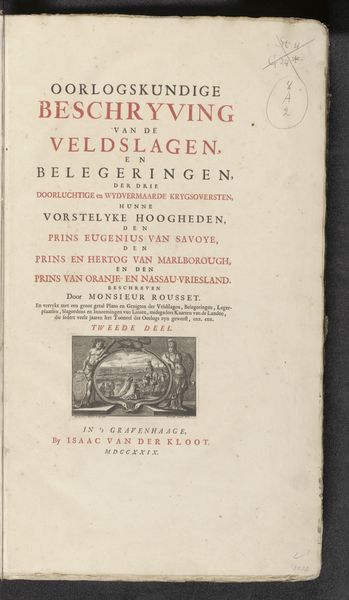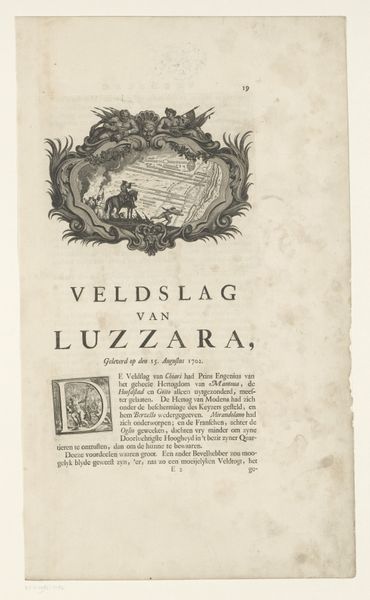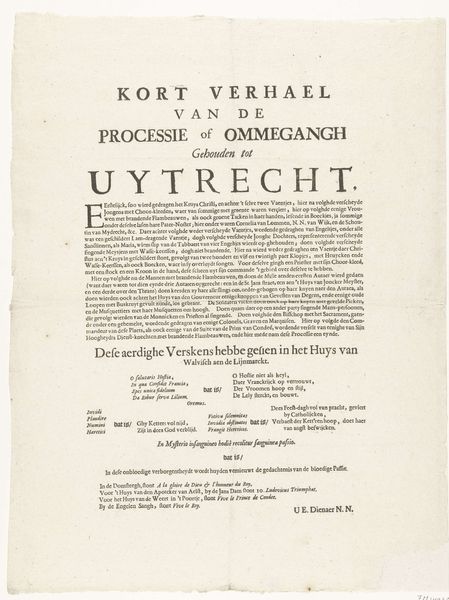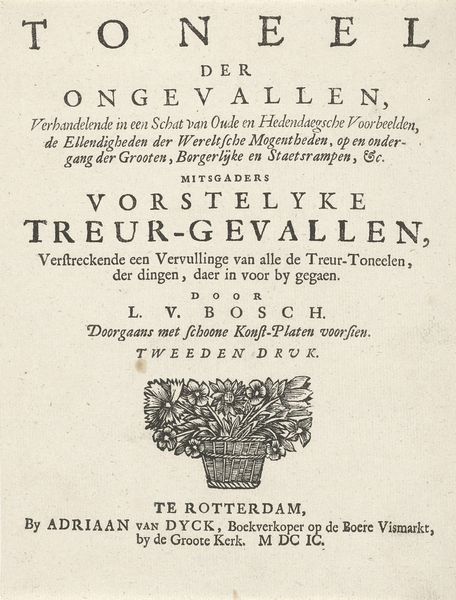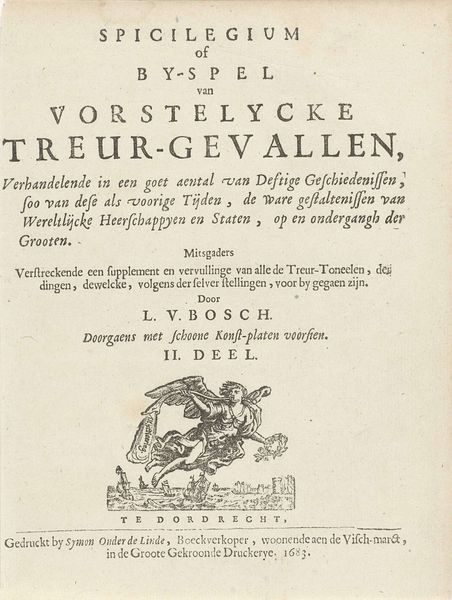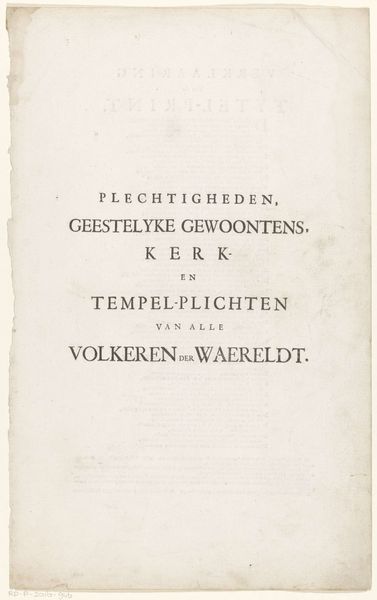
graphic-art, print, engraving
#
graphic-art
#
aged paper
#
ink paper printed
# print
#
old engraving style
#
cityscape
#
history-painting
#
engraving
Dimensions: height 168 mm, width 205 mm, height 516 mm, width 301 mm
Copyright: Rijks Museum: Open Domain
Editor: Here we have "Ontzet van Turijn, 1706," or the Relief of Turin, 1706, an engraving by Jan Wandelaar from 1729. It’s printed with ink on paper and what strikes me immediately is how incredibly detailed it is. All those tiny lines must have taken forever! What visual elements do you see as particularly significant? Curator: The complexity is, indeed, noteworthy. However, let us consider the framework. The overall structure of the image is key to its reading. Observe the balance between the visual components: the ornate cartouche encompassing the city plan, the typography indicating the title, and the block of descriptive text. Editor: I see it now, the top is ornamental with the battle map. And below is text which becomes more plain and functional. Curator: Precisely. The cartouche itself warrants further attention. It uses allegorical figures and battle imagery to communicate. Consider the function of the lines themselves; they don’t simply delineate forms, they create tonal variations through density and direction, contributing to a sophisticated understanding of depth. Note also how the eye is directed by contrasting areas of the images. Editor: So the sharp lines help emphasize the battle? The artist really focuses our gaze through this formal relationship, and less about who won or why. Curator: Indeed. The emphasis on linear precision serves not only a descriptive purpose but also establishes an aesthetic system by which we may decode the artist's intent through its intrinsic properties. The contrast between form and form, between image and the descriptive text, suggests an almost diagrammatic construction of narrative. The composition reveals the intent. Editor: That makes perfect sense. By examining the formal aspects, we shift from viewing it just as an old map, to understanding the artist’s strategic design of communicating an event. Curator: Indeed, it reframes how we perceive historical events, concentrating the visual components that underpin our understanding.
Comments
No comments
Be the first to comment and join the conversation on the ultimate creative platform.
